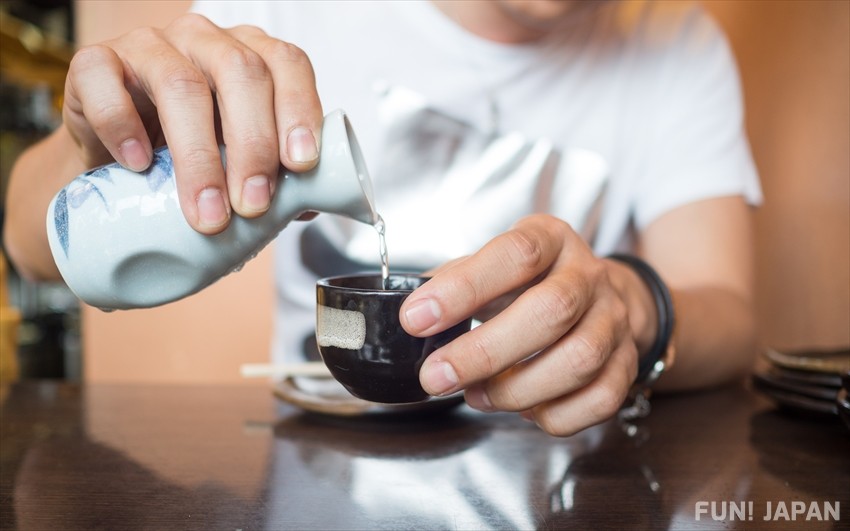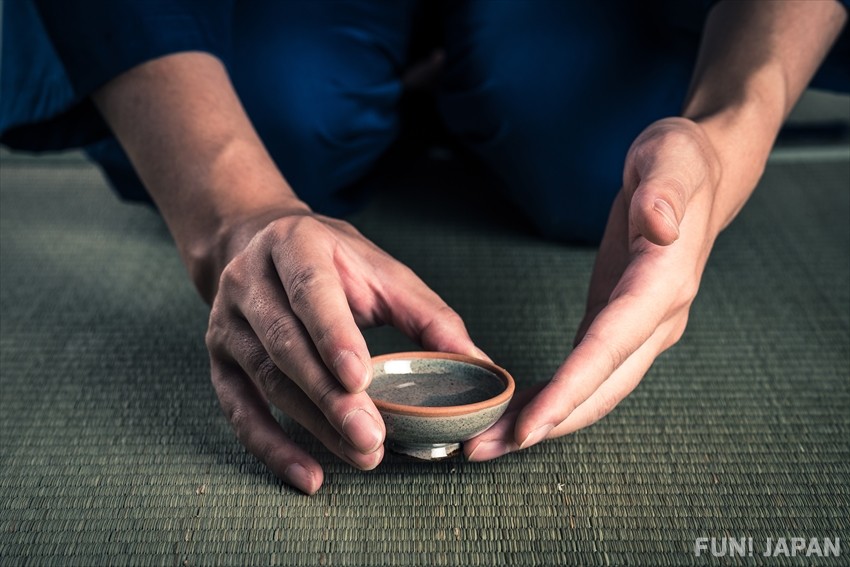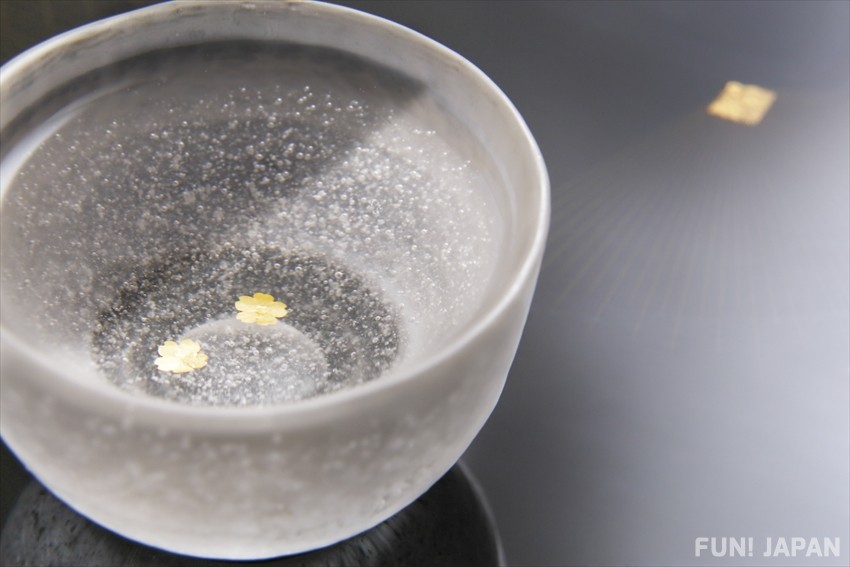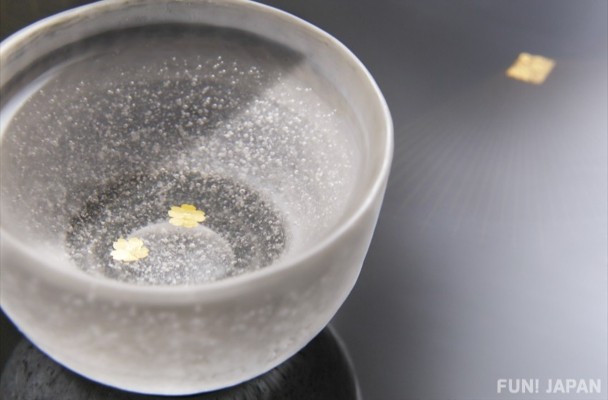
Japan’s national drink, sake is a refined, fermented alcohol produced across the country. While it can be an acquired taste, there are such a wide variety of brands and types you’re sure to find one you enjoy!
What is Sake
A fermented drink made using rice, sake is Japan’s national drink. Whether you try it warm or chilled, dusted with gold leaf or in a local bar, it is a unique taste of Japanese culture. Sake’s alcoholic content is similar to that of wine, ranging from between 13-16%, but is drunk more like a spirit. While it is known worldwide as sake, in Japanese this word actually simply means alcohol. The word for the drink we know as sake is actually nihonshu (日本酒).
The History of Sake
Sake predates Japan’s written records but is known to have been enjoyed for over 2,000 years following the growth of rice cultivation. The first records are actually in Chinese historical texts from the 3rd century, noting that the Japanese enjoy sake and use it during funeral ceremonies. In Japanese historical records from the 8th century, references to brewing sake using koji mould can be found, with a more detailed guide appearing in the 10th-century law book called Engishiki.
Sake has long been connected to ceremonies and is therefore closely bonded to Shinto shrines and Buddhist temples - often used as an offering. During the 12th - 15th centuries, many shrines and temples began brewing their own sake, refining the process as they went. Sake is used in ceremonies such as Natsugoshi-no-sake, which is drunk on the final day of June to wash away impurities. It is also enjoyed on coming of age day which occurs in January and is decorated with flowers such as an iris or chrysanthemum petal to mark significant days (Tango-no-sekku and Choyo-no-sekku respectively).
How sake is Made

Sake is made using three simple ingredients: water, rice, koji and yeast. While some cheaper brands add alcohol (which was also common during rice shortages following World War II), better quality sake varieties rely on naturally occurring alcohols.
The Ingredients: Rice, Water and Koji
The rice used for making sake is not the same as the rice you may eat at home or in restaurants. Selected for its milky white core, known as a shimpaku (only truly visible in high-quality sake rice) the grains are polished to varying degrees to affect the character of the sake.
The water used for sake must be incredibly pure and is equally as important as the other ingredients, and can impact the final flavours significantly. Natural spring water is ideal, as the minerals in water influence the growth of the koji mould during the fermentation process.
Koji is a rice mould that converts rice starch into fermentable sugars. It is created by adding spores of aspergillus oryzae mould (known as koji-kin) to steamed rice where it incubates, forming koji. It is also used to create miso and soy sauce.
The Process
While there are variations in sake brewing methods depending on region, brewery and variety, there is a general method that has been developed over the centuries. In preparation, steamed rice, water and koji are added to a similar mix that also contains high levels of yeast which is known as the shubo - together these form a mash called moromi. During the moromi preparation stage, a unique three-step fermentation process takes place known as the sandan shikomi., The first step, called hatsuzoe, begins with koji, steamed rice and water being added to the yeast starter, with the mix being left to ferment for 1-2 days. In the second step, called nakazoe, more koji, steamed rice and water are added to the moromi. This is left to ferment further, before the third step, called tomezoe begins, with a third batch of koji, rice and water being added.
After the three-stage process, the koji will begin a process called parallel fermentation, which is unique to sake production. The koji will break down the rice starch into sugar, which the yeast will then use to create carbon dioxide and alcohol. When the fermentation process is complete, the moromi mash will be pressed to remove the sake lees and the sake will be filtered, pasteurized and stored for the maturation process.
Famous Sake-brewing Locations

Due to the simplicity of ingredients required for sake and its popularity, it is produced all over Japan. This means that whichever part of the country you travel to, there will more than likely be a sake brewery with a local speciality to try. There are, of course, certain regions which pride themselves on having some of the best sake in the country.
One-third of Japan’s sake comes from the region of Nada in the city of Kobe, Hyogo prefecture. This is due to the high-quality water but also the city’s past as a major shipping port which was important for trade with Tokyo. Hyogo is home to some of the nation’s biggest sake names including Hakutsuru, Takara Holdings, Ozeki and Kiku Masamune.
The ancient capital of Kyoto was also known for sake production, specifically in the Fushimi area. One of the world’s largest brewers - Gekkeikan - has been located there since 1637, again relying on the local water and easy route to Tokyo.
In the northwest of Japan, the colder region of Niigata has steady supplies of high-quality rice and fresh mountain water with producers including Asahi Shuzo and Hakkaisan.
How to Enjoy Sake

Sake is unusual in that it can be enjoyed warm (atsukan), at room temperature (joon) or chilled (reishu). The warmed version is popular in winter but is not suited to all varieties, as it can lead to a loss of the more subtle flavours. This is one reason why many lower-quality sakes are served hot, at around 50 degrees centigrade, while chiled sake is served at around 10 degrees.
Traditionally, it is poured from a tall ceramic or porcelain bottle called a tokkuri. If you are attending a ceremony or significant event, it will be poured into a smal dish called a sakazuki. Another traditional way of serving sake is to use a masu, a small cedar or cypress box that would usually be used to measure rice. In some restaurants, a small (more informal) sake cup known as a choko will be placed inside a mazu and both will be filled as a sign of generosity. In regular bars or at home it is common to have sake served in a choko alone, or small cups called koppu-zake. Sake is measured in units called ‘gō’ which are approximately 180ml and fit perfectly inside a masu when filled to the brim.
As well as enjoying it alone, sake can also be used in cocktails and as a mixer, thanks to its relatively low alcohol content.
Different Kinds of Sake

Depending on the ingredients and rice milling process, there are a range of classifications that can be placed on different varieties of sake. The main two factors are additional ingredients, such as distilled alcohol, and the rice milling rate, which is the removal of the outer layer of rice, to reach the shimpaku (core).
- Junmai: This means the sake has only rice, water, yeast and koji, with no additional ingredients like alcohol allowed. There is no rule amount the rice milling level.
- Honjozo: This variety requires 70% rice grain milling and can have small amount of distilled alcohol added to it.
- Junmai Ginjo: This variety requires 60% rice grain milling and has no additional ingredients added.
- Ginjo: This also requires 60% rice grain milling but can have a small amount of distilled alcohol added to it.
- Junmai DaiGinjo: This variety requires 50% grain milling and has no additional ingredients included.
- Daiginjo: This also requires 50% rice grain milling but can have small amounts of distilled alcohol added to it.
Famous Sake Brands to Try

There are countless sake brands to try, and knowing where to start can be quite overwhelming. While some are well-known thanks to television appearances, many lesser-known types are equally if not more delicious. A great way to learn which varieties you prefer can be to try tasting platters at sake bars or ask for the owner’s ‘osusume’ which means recommendation.
Some popular brands to look out for include:
- Juyondai: One of the highest-ranked brands in the world, this sake is known for its smooth and vanilla balance. It is quite pricey, so best to try it by the glass in a bar or restaurant.
- Dassai: Makers of some of the finest sake, these bottles can sell for over 30,000 yen. Their grain milling takes the grains down to 23% of their original size for the priciest bottles, but they also have more affordable options.
- Kamotsuru Tokusei Gold Daiginjo - popularised by Obama and Abe during a televised dinner in Tokyo, this gold-flecked sake is surprisingly affordable and has received dozens of awards for its flavour.
- Gekkeikan: One of Japan’s oldest brands, they have almost 400 years of experience brewing and are known for a dry, almost grapefruit-like flavour.

Comments